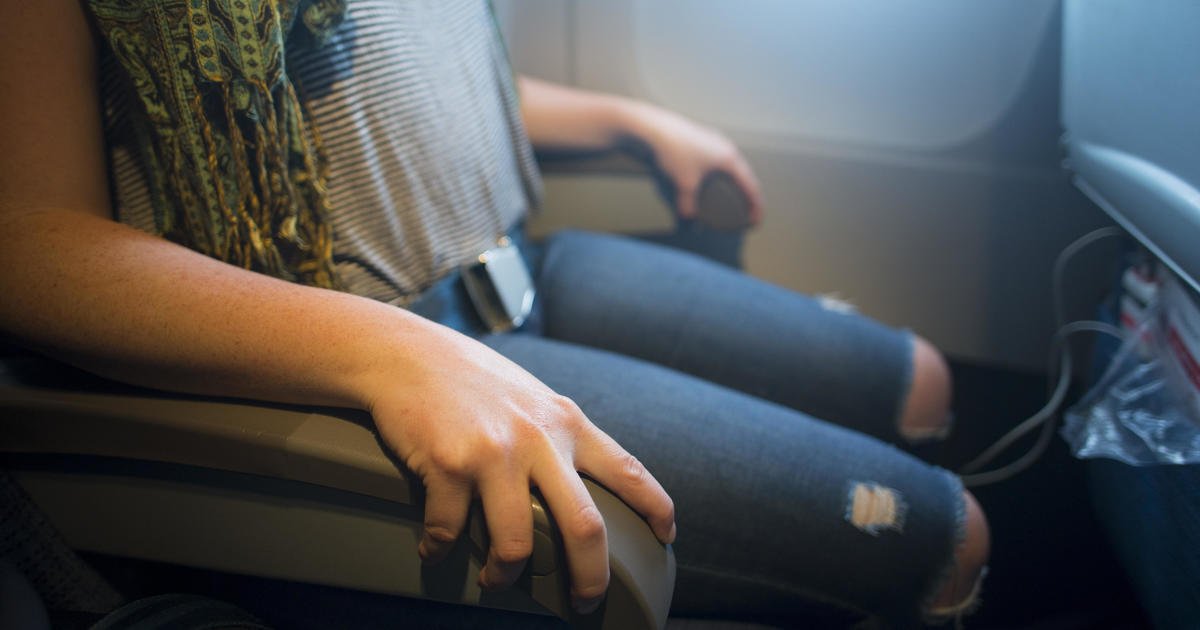Flying is rife with frustrations, particularly as airlines shrink the space between seats to shoehorn in more passengers. The uncozy confines are fueling debate over proper flight etiquette, from what is appropriate when it comes to reclining your seat to who has the right to use an even smaller, more contested zone: armrests.
Compounding the issue is that there are no formal or clear-cut rules around which passenger is entitled to the two armrests that straddle the middle seat. Airlines don’t address the issue in writing or in safety demonstration videos before take off, leaving passengers to negotiate the shared space with little guidance.
The frequent result, not surprisingly, is a tussle over precious space informed by people’s personal views on who has dibs on the armrests or how they should be partitioned.
“Different people have different perspectives,” said Jess Bohorquez, founder and CEO of Points by J, a travel tips website.
For example, ultra-courteous passengers could empathetically view the debate from the perspective of the passenger in the middle seat, who is, after all, the most cramped. The window-seat occupant can lean into the window, while aisle passengers can stretch their legs.
“In my opinion, the window and the aisle seats are more desirable because you don’t have people on each side of you,” she said. “Since the middle is already a tough enough seat to be plopped into, if you’re being generous as a window- or aisle- seat person, you’ll give them both of the armrests.”
Gray area
A summer survey from flight aggregator Kayak around the “Unspoken Rules of Air Travel” found that armrests are essentially up for grabs. Fifty-seven percent of respondents said the middle seat passenger is not entitled to both arm rests. Not even Kayak’s own marketing team could agree on which passenger should cede the space to their seat mate.
“It was hotly debated among our team,” Kayak’s consumer travel trends expert Kayla Deloache told CBS MoneyWatch. “Does it automatically go to person in middle seat? To whoever gets there first? There was some disagreement.”
That said, she doesn’t think it’s incumbent on airlines to specify rules for armrest usage.
“There are already so many rules when you fly that adding something like this on top of it wouldn’t make sense. They need to focus on the safety of the passengers with rules. This is really up to the flyers,” she said.
Etiquette expert Diane Gottsman agrees that airlines weighing in would send them down a slippery slope.
“Then they would have to cover kicking the seat, hitting the call button, reclining,” she said.
“It’s all a negotiation”
Underlying the contest for space on a plane is an axiom of flying these days that few passengers may think about: Even when you purchase an airplane ticket, nearly every inch on an aircraft is up for negotiation, according to travel expert Chris Elliott of consumer news site the Elliott Report.
“The idea that anything on the plane belongs to anyone is absurd. It’s a shared space, including your seat, the space in front of you, next to you. Anyone who says that the armrest belongs to anyone is blowing smoke,” he told CBS MoneyWatch. “Even the space in your seat, sometimes you find people spilling over into your seat if you are seated next to someone bigger. You may not be able to use the entire seat and airlines are very unsympathetic to that. So I wouldn’t even say the seat belongs to you, it’s all a negotiation.”
The same battle also rages for space under seats and overhead bins. “Where does your space end and theirs begin?” Elliott added.
To avoid altercations, a polite passenger can choose to address the issue head on and simply ask their seat mate if they mind your using the armrest.
“At least you asked and didn’t assume that it’s yours,” Elliott said.















































